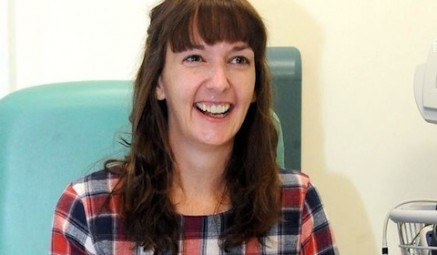BY Daniel Harkins | February 23 | ![]() 0 COMMENTS
0 COMMENTS ![]() print
print

Prayers as Scottish nurse with ebola is re-admitted to London hospital
Pauline Cafferkey from Cambuslang, South Lanarkshire, in thoughts and prayers of local parishioners as she is flown by the RAF to the Royal Free Hospital
Pauline Cafferkey, the Scottish nurse who contracted ebola in West Africa, is being flown to specialist unit in London this afternoon for the third time since contracting the virus.
Ms Cafferkey, 40, was diagnosed with ebola in December 2014 after working with victims of the virus in Sierra Leone. She was discharged from hospital after almost a month of treatments but was readmitted to the Royal London in October last year with meningitis caused by the virus. She was given the all clear in November and returned home after a stay at Glasgow’s Queen Elizabeth University Hospital.
NHS Greater Glasgow and Clyde said Ms Cafferkey (above) had been again admitted to the Queen Elizabeth University Hospital in Glasgow ‘under routine monitoring by the Infectious Diseases Unit.’ She is now being flown by RAF Hercules aircraft to the Royal Free Hospital in London for specialist treatment and is said to be in a stable condition.
Ms Cafferkey lives in Drumsagard Village, outside Cambuslang. Her nearest parish is St Cadoc’s, Halfway.
“Fr Jose Cirlo Rodrigues, St Cadoc’s parish priest, and his congregation keep Ms Cafferkey in their thoughts and prayers, now and always, and trust in God to keep her in His grace,” a parishioner from St Cadoc’s told the SCO.
Bishop John Keenan of Paisley led the nation in prayers for the nurse last year upon her re-admittance to hospital after visiting a school.
A spokesman for London’s Royal Free today said: “We can confirm that Pauline Cafferkey is being transferred to the Royal Free Hospital due to a late complication from her previous infection by the ebola virus.
“She will now be treated by the hospital’s infectious diseases team under nationally agreed guidelines. The ebola virus can only be transmitted by direct contact with the blood or bodily fluids of an infected person while they are symptomatic so the risk to the general public remains low and the NHS has well established and practised infection control procedures in place.”










